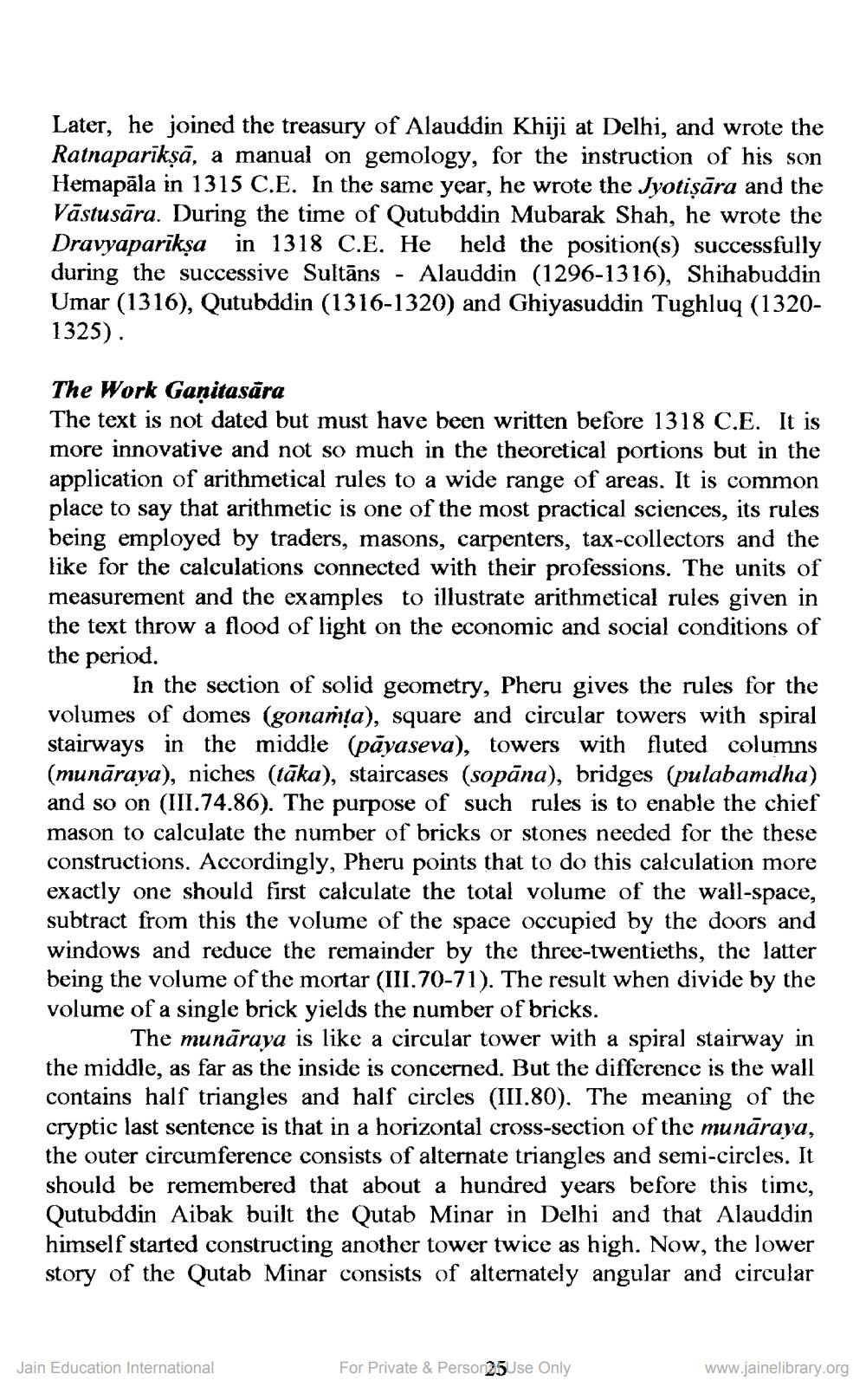________________
Later, he joined the treasury of Alauddin Khiji at Delhi, and wrote the Ratnaparikṣā, a manual on gemology, for the instruction of his son Hemapāla in 1315 C.E. In the same year, he wrote the Jyotişāra and the Vāstusāra. During the time of Qutubddin Mubarak Shah, he wrote the Dravyapariksa in 1318 C.E. He held the position(s) successfully during the successive Sultāns - Alauddin (1296-1316), Shihabuddin Umar (1316), Qutubddin (1316-1320) and Ghiyasuddin Tughluq (13201325).
The Work Ganitasāra The text is not dated but must have been written before 1318 C.E. It is more innovative and not so much in the theoretical portions but in the application of arithmetical rules to a wide range of areas. It is common place to say that arithmetic is one of the most practical sciences, its rules being employed by traders, masons, carpenters, tax-collectors and the like for the calculations connected with their professions. The units of measurement and the examples to illustrate arithmetical rules given in the text throw a flood of light on the economic and social conditions of the period.
In the section of solid geometry, Pheru gives the rules for the volumes of domes (gonamța), square and circular towers with spiral stairways in the middle (pāyaseva), towers with fluted columns (munāraya), niches (tāka), staircases (sopāna), bridges (pulabamdha) and so on (III.74.86). The purpose of such rules is to enable the chief mason to calculate the number of bricks or stones needed for the these constructions. Accordingly, Pheru points that to do this calculation more exactly one should first calculate the total volume of the wall-space, subtract from this the volume of the space occupied by the doors and windows and reduce the remainder by the three-twentieths, the latter being the volume of the mortar (III. 70-71). The result when divide by the volume of a single brick yields the number of bricks.
The munāraya is like a circular tower with a spiral stairway in the middle, as far as the inside is concerned. But the difference is the wall contains half triangles and half circles (III.80). The meaning of the cryptic last sentence is that in a horizontal cross-section of the munāraya, the outer circumference consists of alternate triangles and semi-circles. It should be remembered that about a hundred years before this time, Qutubddin Aibak built the Qutab Minar in Delhi and that Alauddin himself started constructing another tower twice as high. Now, the lower story of the Qutab Minar consists of alternately angular and circular
Jain Education International
For Private & Person25Use Only
www.jainelibrary.org




